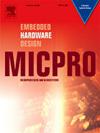Fault tolerant voting circuits: A Dual-Modular-Redundancy approach for Single-Event-Transient mitigation
IF 2.6
4区 计算机科学
Q3 COMPUTER SCIENCE, HARDWARE & ARCHITECTURE
引用次数: 0
Abstract
As device dimensions shrink and operating frequencies increase in modern technologies, Single Event Transient faults present significant challenges. These arises from the susceptibility to radiation-induced errors and decreasing feature sizes, which can propagate through logic circuits and result in incorrect system behavior, reducing reliability, particularly concerning internal nodes of combinational voting circuits.
This paper emphasizes the importance of voting schemes focusing on specific Dual Modular Redundancy lock-step architectures where the voting system is made of a comparator with parity and a recovery signal. The study includes both theoretical and practical fault injection analyses and proposes a novel voting structure designed to reduce the failure rate to 0.4% in cases of Input-Internal faults. This achievement represents the lowest failure rate reported in the literature when compared to conventional DMR lock-step comparators and Self voter approaches without filtering mechanisms. The proposed solution significantly enhances fault resilience, with only a slight increase in hardware utilization and frequency performance.
容错投票电路:单事件暂态缓解的双模冗余方法
在现代技术中,随着设备尺寸的缩小和工作频率的增加,单事件瞬态故障提出了重大挑战。这是由于对辐射引起的误差的敏感性和特征尺寸的减小,这可以通过逻辑电路传播,导致不正确的系统行为,降低可靠性,特别是关于组合投票电路的内部节点。本文强调了投票方案的重要性,重点讨论了特定的双模冗余锁步结构,其中投票系统由一个具有奇偶校验的比较器和一个恢复信号组成。该研究包括理论和实际故障注入分析,并提出了一种新的投票结构,旨在将输入-内部故障的故障率降低到0.4%。与传统的DMR锁步比较器和没有过滤机制的自我投票方法相比,这一成就代表了文献中报道的最低故障率。该方案显著提高了故障恢复能力,硬件利用率和频率性能仅略有提高。
本文章由计算机程序翻译,如有差异,请以英文原文为准。
求助全文
约1分钟内获得全文
求助全文
来源期刊

Microprocessors and Microsystems
工程技术-工程:电子与电气
CiteScore
6.90
自引率
3.80%
发文量
204
审稿时长
172 days
期刊介绍:
Microprocessors and Microsystems: Embedded Hardware Design (MICPRO) is a journal covering all design and architectural aspects related to embedded systems hardware. This includes different embedded system hardware platforms ranging from custom hardware via reconfigurable systems and application specific processors to general purpose embedded processors. Special emphasis is put on novel complex embedded architectures, such as systems on chip (SoC), systems on a programmable/reconfigurable chip (SoPC) and multi-processor systems on a chip (MPSoC), as well as, their memory and communication methods and structures, such as network-on-chip (NoC).
Design automation of such systems including methodologies, techniques, flows and tools for their design, as well as, novel designs of hardware components fall within the scope of this journal. Novel cyber-physical applications that use embedded systems are also central in this journal. While software is not in the main focus of this journal, methods of hardware/software co-design, as well as, application restructuring and mapping to embedded hardware platforms, that consider interplay between software and hardware components with emphasis on hardware, are also in the journal scope.
 求助内容:
求助内容: 应助结果提醒方式:
应助结果提醒方式:


